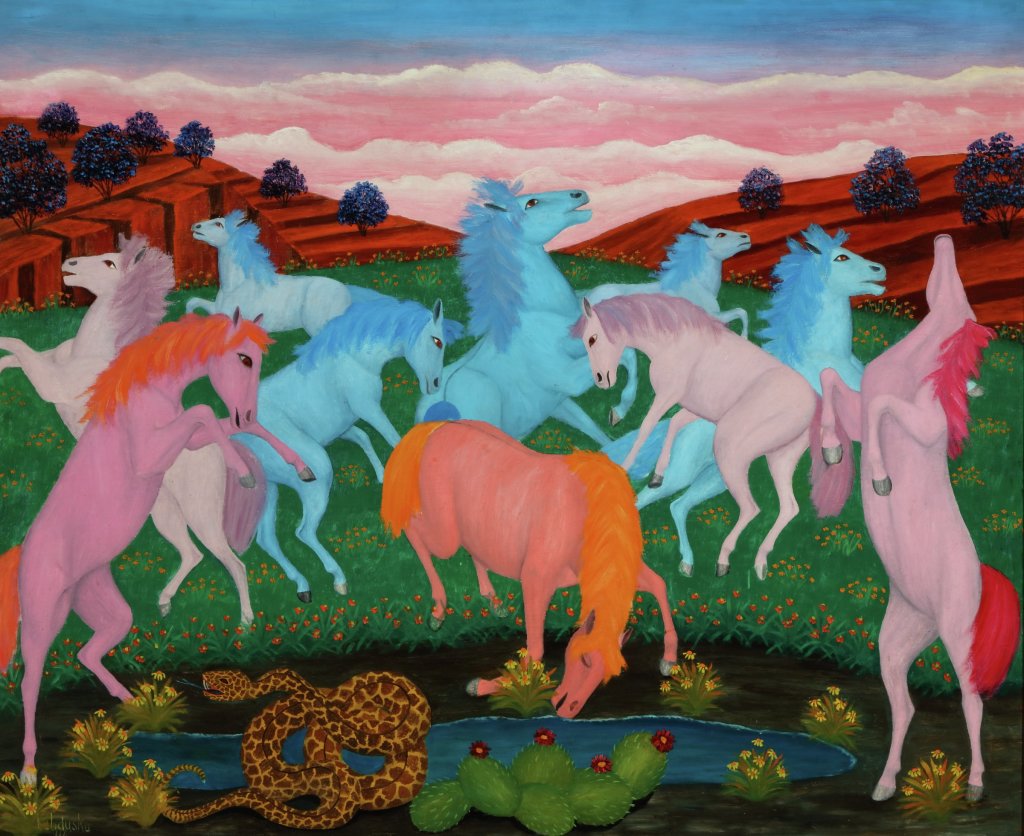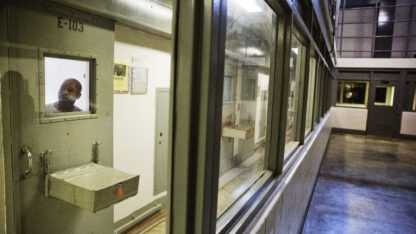The High Museum’s New Exhibit ‘Gatecrashers’ Celebrates Self-Taught Artists

Lawrence Lebduska
American, 1894-1966
Untitled (Horses and Snakes), 1936
Courtesy of the High Museum
In the history of American art, a particular moment stands out as crucial to the discovery and embrace of folk artists. After World War I, the Great Depression and subsequent years saw a new wave of art made by people without academic training, often without even the means to buy traditional art supplies. Gatecrashers: The Rise Of The Self-Taught Artist In America is the new exhibition at Atlanta’s High Museum collecting works from this period. Katie Jentleson is the museum’s Curator of Folk and Self-Taught Art whose book (of the same name) explores the important role American self-taught artists played throughout the 20th century. Jentleson joined “City Lights” host Lois Reitzes to talk about the lives of the untrained artists that make up the collection, and their influence on art culture then and now.
Interview highlights:
The Depression-era embrace of folk artists:
“My book ‘Gatecrashers’ … was really focusing on the three most celebrated self-taught artists to emerge in the post-World War I period, and those artists were John Kane, Horace Pippin, and Anna Mary Robertson (Grandma Moses),” Jentleson said. “The book is very focused on each of them as a kind of case study and window into why self-taught artists became so popular in this period, but the exhibition takes a much broader view … It looks at a lot of their contemporaries — other artists who never went to art school, never had academic schooling in art-making, yet became very, very popular, especially in the 1930s.”
“This idea that artists were people, artists were workers … who needed recognition and support, was so widespread during the Depression,” Jentleson said. “It really helped facilitate this interest in self-taught artists, who were seen as being especially close to this idea about artists as everyday people, because they came from often very humble backgrounds. They were often working-class, and people who held many different kinds of jobs during their lifetime, and made art on the side, and often not until late in their lives.”
On Anna Mary Robertson, also known as Grandma Moses:
“She was so busy raising a family, with farm work, that she didn’t have time to pursue this interest in art she held as a child,” Jentleson said. “She finally, later in life … no longer able to do the hard labor of farm work, she starts dedicating more time to, first doing embroidered pictures, and then because she gets really frustrated that moths are eating them, she turns to painting. Also, she has arthritis, and by now she’s in her 70’s — she wants a medium that isn’t so hard on her physically, and that will last.”
“Her fame skyrockets in the 1940s, and she just becomes this pop culture phenomenon. She’s so much more than just a fine artist, she becomes, literally, America’s Grandmother. That’s what the governor of Vermont ultimately dubs her.”
“A lot of curators and critics were really angry that Grandma Moses was getting, still, so much visibility in exhibitions at home, and especially abroad. The reality of 1950 was that Grandma Moses was still wildly popular, arguably much more popular than Jackson Pollock was at that time, and this was very frustrating for those critics who wanted to see a different story of American art being told.”
The goal of “Gate Crashers”:
“Part of what ‘Gatecrashers’ brings forward … is that there’s so much anxiety about whether America really has, or has ever, produced artists who are truly American — who really represent American innovation,” Jentleson said. “Or whether we’ve suffered and failed for decades, for over a century, to produce something that’s truly original. We know that there are so many extraordinary American artists … but they were always battling against this idea that they were too derivative of what their European peers were doing.”
“We realize that so many different artists and artistic styles and movements actually coexist at any given moment. And we’re living in a moment of embracing… the fact that there actually are so many wonderful artists who aren’t white and male. So that’s part of what I hope the contribution of ‘Gatecrashers’ is … to reveal that these self-taught artists were doing something really important alongside other movements and trends in American modernism.”





